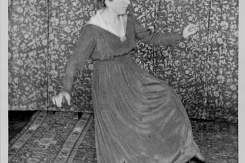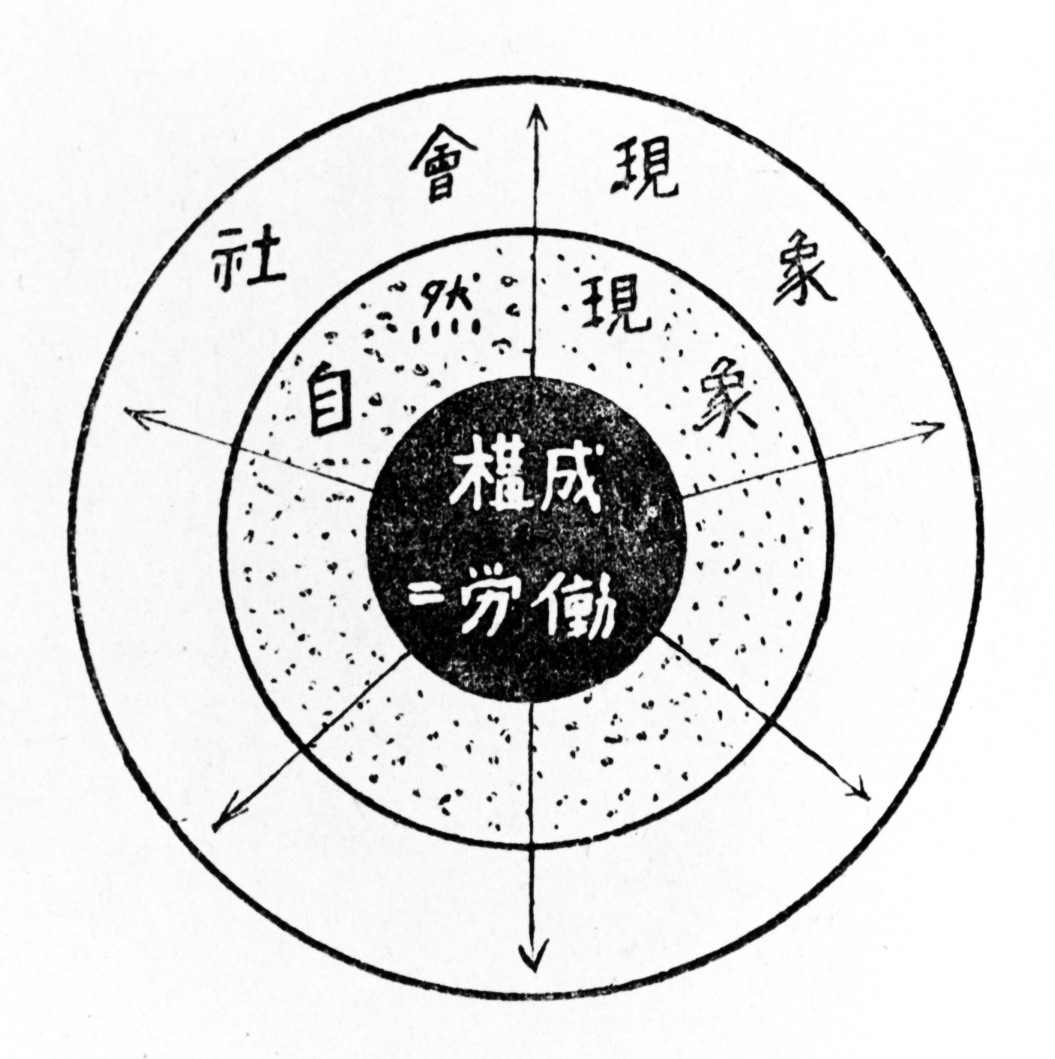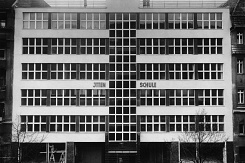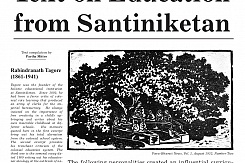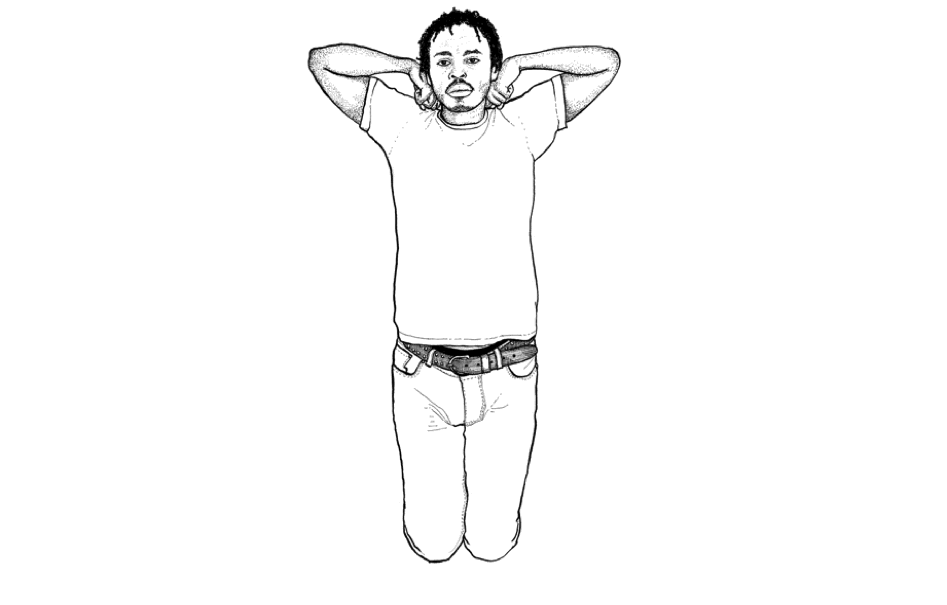After the manifesto of the State Bauhaus in Weimar penned by Walter Gropius was published in the spring of 1919, the school’s program attracted more than 200 students from throughout Europe and the German provinces. The portion of foreign students attending the Bauhaus in Weimar was 17.5 percent in 1922; at the Dessau Bauhaus it had reached 32 percent by the end of 1931. Equal opportunity was a top priority. There were virtually no restrictions with regard to students’ gender, nationality, skin color, religion/worldview, prior training or financial means. The one-semester basic course served as a trial semester, determining the suitability of the prospective students and enabling students from abroad to learn German within the community. A large student contingent, mainly from bourgeois Viennese Jewish families, arrived with Johannes Itten at the end of 1919. A second group consisting of young Hungarian emigrants from Pecs and Budapest—some of whom had participated in the Hungarian Soviet Republic and were now undergoing political persecution—followed in the mid-1920s, arriving via Vienna and Berlin. Among them were Marcel Breuer, Andor Weininger, Henrik Stefan and Farkas Molnár.1

Karl Peter Röhl, Bauhaus signet „Sternenmännchen“ (star manikin), 1919,
Bauhaus-Archiv Berlin.
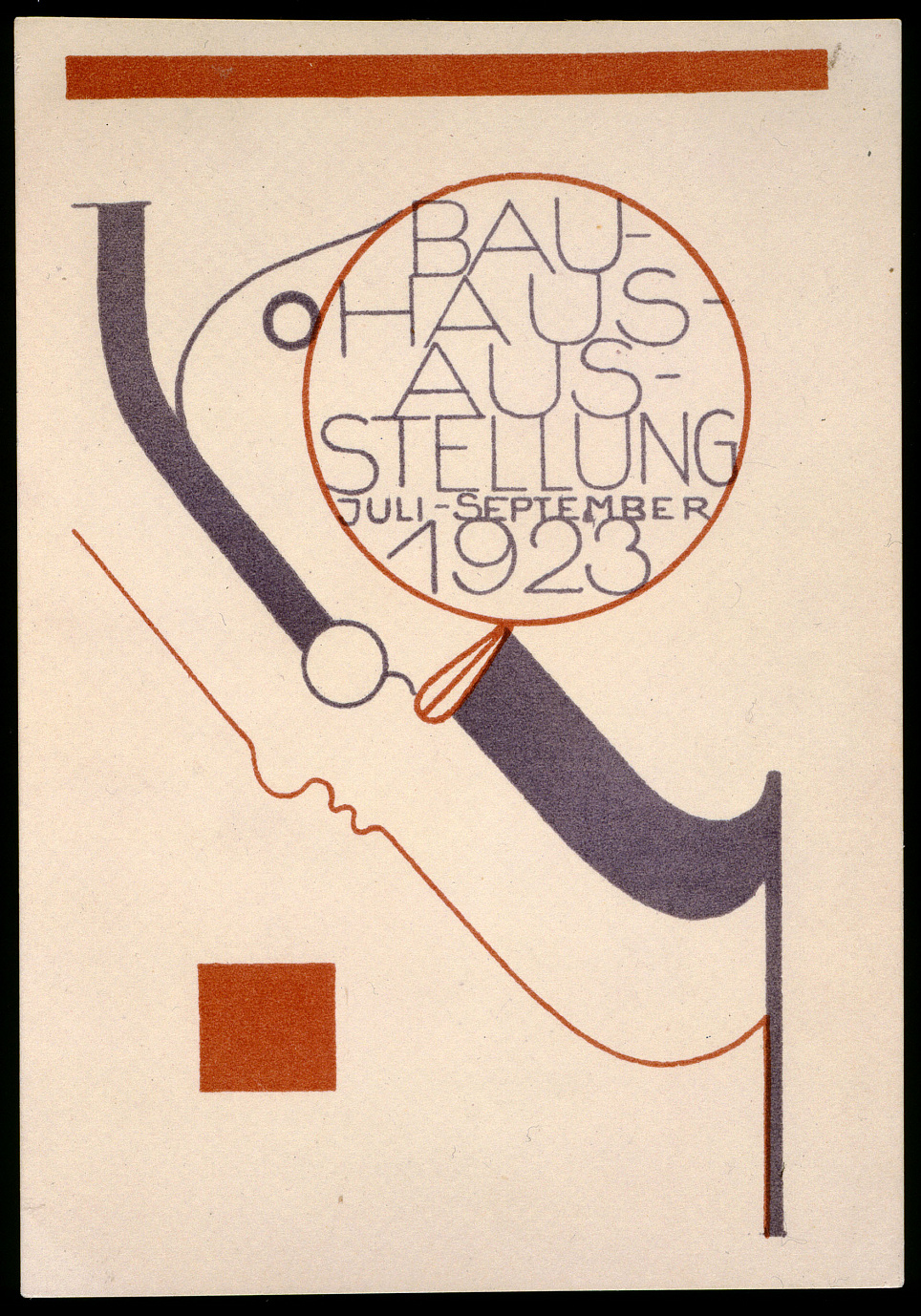
Oskar Schlemmer, Postcard for the Bauhaus exhibition (No. 8), 1923, Bauhaus-Archiv Berlin.
Although the Bauhaus opened its door in 1919, it took more than three years for Gropius to fully organize the school’s faculty, since with the departure of several of the old art school’s professors, such as Max Thedy, Richard Engelmann and Walther Klemm, open positions had to be regularly filled. But Gropius’s first appointments indicated the course set toward an international avant-garde school, a school of invention. The German-American Lyonel Feininger followed Itten, who hailed from Südern-Linden in Switzerland, to the Bauhaus in its first year, and other foreign hires followed: Swiss native Paul Klee in 1921, the Russian Wassily Kandinsky in 1922 and the Hungarian László Moholy-Nagy in 1923. This faculty was rounded off by the German artists Gerhard Marcks, Georg Muche and Oskar Schlemmer, as well as the architect Adolf Meyer, a partner in Gropius’s architecture office. These avant-garde artists served as “form masters” and directors of the Bauhaus workshops, working alongside acknowledged masters of different handicrafts in a dual system that trained students to be both proficient craftspeople and creative thinkers. The variegated artistic and pedagogical experiences of this faculty and the cosmopolitanism of the student body reinforced the Bauhaus’s pedagogical mission, which always stressed a holistic approach to its students, encouraging them to develop all their talents so that they would become individual designers.2
With his “Cathedral,” the woodcut gracing the title page of the Bauhaus manifesto, Feininger had already broadcast a signal of artistic departure in 1919. The first Bauhaus signet, on the other hand, was developed by Karl Peter Röhl, the winner of a student competition. His “Star Manikin” congenially symbolized the intellectual universe and the pedagogical aims of the early Bauhaus. At its center was a slim human figure holding aloft an Egyptian pyramid, surrounded by a host of cosmic symbols—the swastika, the sun wheel and the Buddhists’ symbol of happiness. The figure’s stylized circular head—half black, half white—symbolized the Chinese yin and yang. The stick figure itself is the Germanic rune for man and woman, while also referencing Leonardo da Vinci’s famous drawing of Vitruvian man.3 This signet, with its many spiritual references, offered a vision of a new, peaceful and global community, signaling the overcoming of outmoded Eurocentric patterns of thinking and behavior, replaced by the project of educating creative designers imbued with a new trans-cultural sensibility, within a democratically constituted society. Oskar Schlemmer’s 1921 adaptation eliminated the symbolic trapping of Röhl’s expressive and perhaps overly exuberant utopian vision, creating the far more famous Bauhaus head in profile.
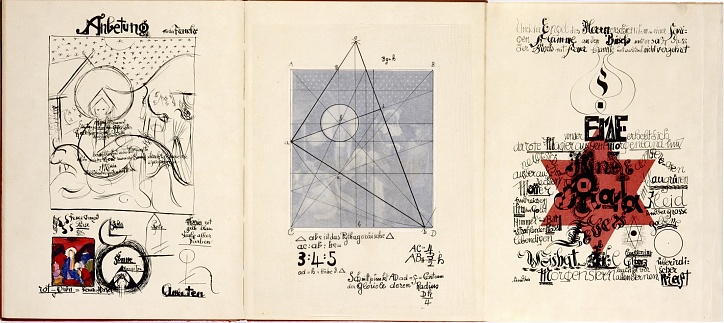
Johannes Itten, Adoration after Master Franke (double page from "Analysen Alter Meister", in: Bruno Adler (ed.): Utopia. Dokumente der Wirklichkeit, I/II, Weimar 1921), Klassik Stiftung Weimar/Graphics Collection / © VG Bild-Kunst, Bonn 2018.
Johannes Itten dominated the pedagogical profile of the Bauhaus in its first years. While still residing in Vienna, in 1919 he printed a portfolio of ten lithographs visualizing his artistic and art-pedagogical program, and demonstrating different steps and methods of artistic abstraction. Alongside plants and an Alpine landscape are dynamic depictions of figures that appear to be inspired by Italian Futurism, complimented by non-representational, abstract compositions, cosmic visions that can also be read as symbols for different emotional states. What remains remarkable even today is the pluralistic—one could say conceptual—approach he takes in this sequence of graphics.4 With the publication of his graphic, Analysen Alter Meister” (Analyses of Old Masters), published in the magazine Utopia in 1921, Itten made public his artistic basic training in a form combining images with text. He presented his method of pictorial analysis at the Bauhaus based not only on German examples such as the Adoration by Meister Francke, but also a traditional Chinese ink brush master. The complexity of the analyses is remarkable, carried out in content-related and formal terms that use language and drawing to allude to different levels of abstraction, with the aid of mathematical methods of geometry and algebra:5 Art and science are here united in the educational process. On the other hand, what remains problematic is his allegiance to the Mazdaznan sect, a movement based on Zorastrianism that had its origins in the spiritualist revival that swept across the United States at the end of the nineteenth century.6 With the departure of Itten and the further formation of the Bauhaus as a modern design school under the leitmotif of Gropius’s “Art and Technology: A New Unity,” Mazdaznan soon lost its relevance to the Bauhaus program. Discussions of religious, philosophical and ideological issues, however, continued as a facet of Bauhaus campus life—for example, with the Bauhaus evenings—discussed at greater length below—where salon-style events were held with “the intention of bringing together the local population and the youth of the Bauhaus.”7
In 1920 Lyonel Feininger became the director of the printing workshop, following Walther Klemm. It was the only open workshop of the Bauhaus, giving both teachers and students the opportunity to print their works. His most important international project was the portfolio Bauhaus-Drucke. Neue Europäische Graphik (Bauhaus Prints: New European Graphic Art), which in five editions published from 1921 to 1924 brought together 56 works by 49 French, Italian, Russian and German artists. The list of names reads like a who’s who of the European avant-garde of the early twentieth century. Alongside such Bauhaus masters as Feininger, Itten, Kandinsky, Klee, Marcks, Muche, Schlemmer and Schreyer, the Bauhaus-Drucke published French artists such as Coubine, Léger, Marcoussis and Survage, Russians such as Archipenko, Chagall, Gontcharova, Jawlensky, and Larionov, Italians like Boccioni, Carrà, Chirico, Prampolini and Severini, and many Germans unaffiliated with the school, including Baumeister, Beckmann, Dexel, Grosz, Kirchner, Kokoschka, Macke, Marc, Pechstein, Schmidt-Rottluff and Schwitters. The Bauhaus thus latched onto the European network that Herwarth Walden had previously established in 1912 with his Galerie Der Sturm in Berlin. In this way, the Bauhaus students were not only given firsthand access to European avant-garde art, but even had the opportunity to produce these prints themselves. In addition to propagating modern contemporary art, Feininger’s project also served as a supplemental funding stream to support the Bauhaus.8
With the large Bauhaus exhibition of 1923, Weimar became the definitive meeting place of the international avant-garde. The works created at the Bauhaus were presented in the Bauhaus buildings, the model house Am Horn and the Staatliche Kunstsammlungen zu Weimar, with a supporting program at the Deutsches Nationaltheater and the Stadttheater Jena. Integrated in the show was the world’s first international architecture exhibition of modernism after the First World War, presented in the main building of the Bauhaus and published by Gropius in 1925 as Bauhausbuch 1: Internationale Architektur (International Architecture). It featured not only the most important architectural projects undertaken by Gropius—including the Fagus Factory in Alfeld an der Leine and the model factory at the Werkbund Exhibition in Cologne in 1914—but also his Baukasten im Großen (large-scale construction kit), and plans for a new Bauhaus university campus in Weimar (Bauhaus Settlement). Models of path-breaking high-rise buildings and offices by the future, third director of the Bauhaus, Ludwig Mies van der Rohe, were on display, as well as Le Corbusier’s plans for a city of millions—exhibited there for the first time. Frank Lloyd Wright was featured as the pioneer of American architecture alongside several architects of the Dutch avant-garde, with representatives of the De Stijl group, including Dudok, Oud, Rietveld and Wils (who had been able to realize important buildings and ensembles even during the war). Czechoslovakia was represented by young architects from Prague, such as Chochol, Honzik, Krejcar, and Linhart, while architects from the Soviet Russian avant-garde made their appearance only in the catalog. Of course, other German architects like Döcker, Häring, Mendelsohn, Sharoun, as well as Bruno and Max Taut also participated in the show.9 The catalog was published in both English and Russian-language editions.

Natalja Gontscharowa, Female figure, ca. 1922 (Neue Europäische Graphik, 4.6), Bauhaus-Archiv Berlin, photo: Markus Hawlik, © VG Bild-Kunst, Bonn 2018.

Farkás Molnár, cover for Walter Gropius (ed.): Internationale Architektur (Bauhaus Book 1), 1925, monoskop.org.
The Bauhaus exhibition was advertised using numerous forms of printed matter, ranging from posters and nationwide railway ads, to invitation and program cards, as well as a series of postcards with 20 motifs designed by eight teachers and twelve students (those of the latter were in no way inferior to the work of their instructors). The color lithographs were prepared in the Bauhaus printing workshop but printed in Weimar due to the large edition of two thousand. The 40,000 postcards were sent all over the world by mail—most likely the first ever mail-art action.10
A large part of the library of the Weimar State Bauhaus has survived and today is accessible in the library of the Bauhaus University Weimar.11 Its contents are another indicator of the international orientation of the Bauhaus, for it includes not only standard reference works on the history of European art and culture, but also a broad spectrum of publications dedicated to non-European cultures, ranging from archaeological research results of the early Neolithic period in Europe, to African and Asian sculpture, all the way to the art of Polynesia and the architecture of Persia, China, Japan, and Indonesia. What should be mentioned in particular are the publications of the Folkwang Verlag in Hagen and its main author Ernst Fuhrmann, who edited illustrated volumes on the Incas, the pre-Columbian civilizations of Mexico, Indigenous North American tribes and sacred cults in Africa as the prehistory of the hieroglyphs. But in the library’s catalogue one could also find the most recent literature on the international avant-garde, the Dutch magazine Wendingen, Taut’s Frühlicht and Alpine Architektur, Kahnweiler’s Der Weg zum Kubismus (The Rise of Cubism), publications of the Arbeitsrat für Kunst (Workers Council for Art) in Berlin, and international press reports in favor of preserving the Bauhaus from 1924.
From 1924 onward, the most important media project of the Bauhaus was the series of Bauhausbücher (Bauhaus Books) conceived and edited by Gropius and Moholy-Nagy (who designed and supervised the typography).12 In the prospectus announcing the project they wrote: “Based on the insight that all areas of design in life are interconnected, the Bauhaus publishing house issues a series of books that deal with today’s problems of life. (…) The Bauhaus Books will engage with artistic, scientific and technical issues under the aspect of their interrelations. (…) To master such a great task, the Bauhaus publishing house has asked the most knowledgeable experts from different countries to collaborate.”13 Until 1929, 14 Bauhausbücher were published, with the collaboration of colleagues from abroad on typography and book design.14 Several books in the series authored by Bauhaus teachers continue to rank among standard modernist reference works, including Klee’s Pädagogisches Skizzenbuch (Pedagogical Sketchbook, Bauhausbuch 2), Oskar Schlemmer’s Die Bühne am Bauhaus (The Theater of the Bauhaus, Bauhausbuch 4), Moholy-Nagy’s Malerei, Photographie, Film (Painting Photography Film, Bauhausbuch 8) and Von Material zu Architektur (The New Vision: From Material to Architecture, Bauhausbuch 14), as well as Kandinsky’s Punkt und Linie zu Fläche (Point and Line to Plane, Bauhausbuch 9). Starting in 1926, the Bauhaus Books were supplemented with the more up-to-date medium of the Bauhaus journals that pursued the same goals.

Walter Gropius/Adolf Meyer, House Sommerfeld Berlin, photo 1920, Bauhaus-Universität Weimar/Archiv der Moderne; Bauhaus-Alben I/8, © VG Bild-Kunst, Bonn 2018.
International influences can also be found in the artworks, design objects and architectural project that came out of the Bauhaus. Here are just a few examples. The home Gropius built for the Berlin building contractor Adolf Sommerfeld in 1920 was inspired by a photo of the Shōsō-in treasure house in Nara, Japan. By contrast, his director’s office at the Bauhaus in Weimar, built in 1923, was designed entirely in accordance with the principles of the Dutch De Stijl movement.15 Marcel Breuer, in collaboration with Gunta Stölzl, created in 1921 the so-called African chair, recalling the throne of an African tribal chieftain: at the Haus Am Horn two years later he presented a prototype of his Constructivist lattice chair, and in 1926 his vision of an air column for sitting came to fruition with his famous tubular steel chair, “Wassily.”16 The white square in Feininger’s depiction of the village church of Gelmeroda appears to correspond with Malevich’s “Black Square,” while Muche’s residential high-rise with terrace gardens bears a close resemblance to Le Corbusier’s designs for green roofing. Finally, masks and costumes designed for Schlemmer’s Triadic Ballet, produced in the Bauhaus workshops, reference comparable African and Asian objects.
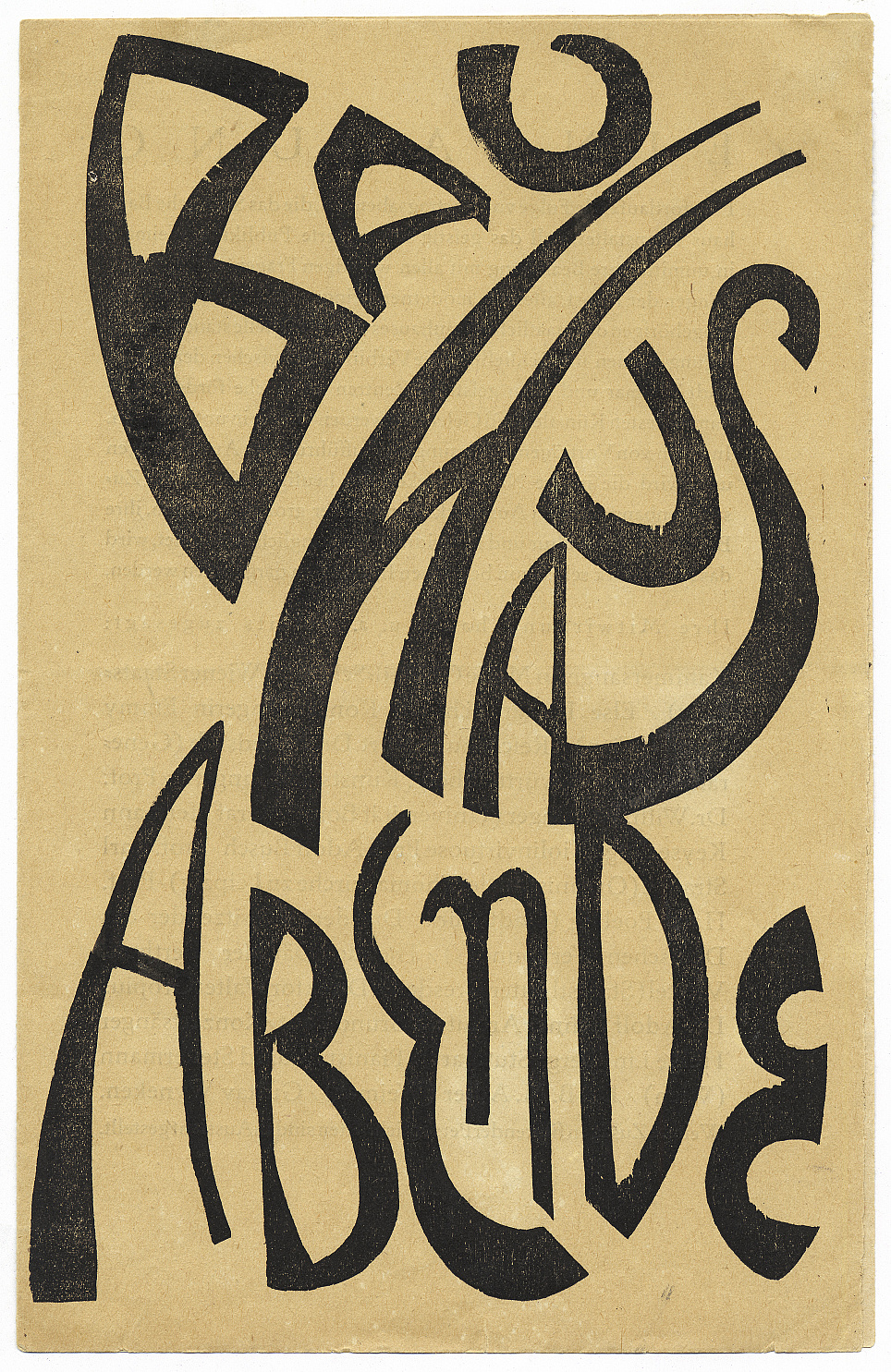
Karl Peter Röhl, Bauhaus-Abende (Bauhaus evening events), lino cut, 1929, Bauhaus-Archiv Berlin.
Finally, the Bauhaus evenings must be mentioned. These were first introduced as voluntary events hosted by students in the spring of 1919, where an array of topics were discussed, ranging from ancient Egyptian history, Giotto’s frescos, Rembrandt’s hand drawings, all the way to Rodin’s cathedral paintings and modern literature.17 Hence, a format was born that had a crucial impact on the intellectual universe of the Bauhaus. From 1924 onward, they were professionalized under the guidance of the Circle of Friends of the Bauhaus. The first ever Bauhaus public event was launched on June 12, 1919, with a concert given by the local musician, composer and jurist Ernst Latzko. Almost 50 musical events and lectures were held at the Bauhaus Weimar, and these varied widely in content and form, often containing international elements. Such was the case with Else Lasker-Schüler’s reading of her Hebräische Balladen (Hebrew Ballads), a piano recital by Eduard Steuermann featuring works by Arnold Schönberg, Maurice Ravel, Erik Satie and Claude Debussy, or Hermann Ranke’s reading of the Epic of Gilgamesh. In 1921 Inayat Khan delivered a lecture on “The Nature of Art,” Heinrich Vogeler on “Die religiöse Bewegung der Revolution” (The Religious Movement of the Revolution), Otto Rauth on the Mazdaznan teachings and, in the spring of 1922, Enrique Colás spoke on “Funktionalismus in Antoni Gaudis Werk” (Functionalism in Antoni Gaudi’s Work). J. J. P. Oud’s lecture “Neues Bauen in Holland” (New Building in Holland) on 17 August 1923 marked the start of a week of festivities dedicated to the opening of the Bauhaus exhibition, and the following day a concert featuring works by Paul Hindemith and Ferrucio Busoni took place in the presence of composers from the Deutsches Nationaltheater. The day after, a matinee was held where compositions by Igor Stravinsky and Ernst Krenek were performed in the presence of the composers.18
At the Bauhaus in Dessau, records show that around 120 events were held from 1927 until its closure in June 1932. These included lectures held by Erich Mendelsohn on “Rußland und Amerika – ein architektonischer Querschnitt” (Russia and America – An Architectural Cross-Section), Gropius on “Amerika,” and El Lissitzky on “Architektur und Werkarbeit” (Architecture and Workmanship). The Hungarian architect Paul Forgo-Fröhlich presented “Neues Bauen in Ungarn” (New Building in Hungary), Russian film pioneer Dziga Vertov spoke on “Kino-Auge. Methode und Technik des russischen Films” (Cine-Eye: The Method and Technique of Russian Film), Viennese philosopher of science Herbert Feigl spoke on “Die wissenschaftliche Weltanschauung” (The Scientific Worldview) and “Naturgesetz und Willensfreiheit” (Natural Law and Freedom of Will), while his colleagues Rudolf Carnap and Otto Neurath presented lectures, respectively, on “Wissenschaft und Leben” (Science and Life), “Die vierdimensionale Welt der modernen Physik” (The Four-Dimensional World of Modern Physics) and “Geschichte und Wirtschaft” (History and Economy). Czech polymath Karel Teige offered guest courses on contemporary literature, modern typography, and the sociology of the city and living, Swiss architect and design instructor Paul Artaria spoke on the financing and practical realization of modern building projects, and the Dutch photographer, typographer and industrial designer Piet Zwart discussed modern typography. Two highlights of the Bauhaus evenings devoted to music were certainly a concert by Bela Bartok and a dance performance by Gret Palucca.19
The Bauhaus in Weimar proved to be a melting pot for the most various ideas and concepts of the European avant-garde, becoming one of the most significant institutions for modernism, and a crucial point of communication in the dissemination of modernist ideas. The role of the Bauhaus as an axis radiating outward and connecting with other modernist thinkers and institutions would continue after the institution moved to Dessau.
- 1 Cf. Folke Dietzsch: Die Studierenden am Bauhaus, dissertation Hochschule für Architektur und Bauwesen Weimar, Weimar 1990, Vol. 2.
- 2 Cf. Michael Siebenbrodt (ed.): Bauhaus Weimar. Entwürfe für die Zukunft, Hatje Cantz, Ostfildern-Ruit 2000.
- 3 Cf. Constanze Hofstaetter & Michael Siebenbrodt (eds.): Karl Peter Röhl in Weimar 1912–1926, Klassik Stiftung Weimar, Weimar 1997; Rolf Bothe, Peter Hahn & Christoph von Tavel (eds.): Das frühe Bauhaus und Johannes Itten, Hatje Cantz, Ostfildern, p. 59–70.
- 4 Ibid, p. 64–65.
- 5 Siebenbrodt: Bauhaus Weimar, 2000 (see footnote 2), p. 239–241.
- 6 Cf. Otoman Zar-Adusht Hanish: Mazdaznan-Reform-Kochbuch und Nahrungsmittellehre, Humala Verlaf, Leipzig, ca. 1917; Ulrich Linse: „Der spurenlose Mazdaznan-Vortrag von Otto Rauth,“ in: Peter Bernhard (ed.): Bauhausvorträge. Gastredner am Weimarer Bauhaus 1919–1925, Berlin, 2017, p. 217–232; Pádraic E. Moore: "A Mystic Milieu. Johannes Itten and Mazdaznan at Bauhaus Weimar", published in this Online Journal.
- 7 Magdalena Droste: Bauhaus Archiv. 1919–1933, Taschen Verlag, Cologne 1990, p. 37.
- 8 Cf. Klaus Weber (ed.): Punkt, Linie, Fläche. Druckgraphik am Bauhaus, Bauhaus-Archiv Berlin, Berlin 1999, p. 35–79.
- 9 Cf. Walter Gropius (ed.): Internationale Architektur (Bauhaus book 1), Gebrüder Mann Verlag, Munich 1925.
- 10 Droste: Bauhaus Archiv, 1990 (see footnote 7), p. 266–277.
- 11 Cf. Michael Siebenbrodt & Frank Simon-Ritz (eds.): Die Bauhaus-Bibliothek. Versuch einer Rekonstruktion, Verlag der Bauhaus-Universiät Weimar, Weimar 2009.
- 12 Cf. Ute Brüning (ed.): Das A und O des Bauhauses, Peter Lang Verlag, Leipzig 1995, p. 114–139.
- 13 Siebenbrodt & Simon-Ritz: Die Bauhaus-Bibliothek, 2009 (see footnote 11), p. 116.
- 14 The list includes: Piet Mondrian: Neue Gestaltung (New Design, Bauhausbuch 5), Theo van Doesburg: Grundbegriffe der neuen gestaltenden Kunst (Principles of Neo-Plastic Art, Bauhausbuch 6), J. J. P. Oud: Holländische Architektur (Dutch Architecture, Bauhausbuch 10), Kasimir Malewitsch: Die gegenstandslose Welt (The Nonobjective World, Bauhausbuch 11), Albert Gleizes: Kubismus (Cubism, Bauhausbuch 13). Several planned volumes, including Heinrich Jacoby‘s (Holland) Schöpferische Musikerziehung (Creative Musical Training), Marinetti’s and Trampolini’s Futurismus (Futurism), El Lissitzky’s Reklame und Typographie (Advertising and Typography), Le Corbusier’s Architektur (Architecture), and Kassák’s and Kállai’s Die Arbeit der MA-Gruppe (The Work of the MA Group) did not see publication.
- 15 Siebenbrodt: Bauhaus Weimar, 2000 (see footnote 2), Haus Sommerfeld: p. 23–27; director’s office: p. 42–43.
- 16 Cf. Alexander von Vegesack (ed.): Marcel Breuer. Design und Architektur, Vitra Design Museum, Weil am Rhein 2003.
- 17 Dietzsch: Die Studierenden am Bauhaus, 1990 (see footnote 1), p. 326.
- 18 Cf. Peter Bernhard (ed.): Bauhaus Vorträge. Gastredner am Weimarer Bauhaus 1919–1925, Gebr. Mann Verlag, Berlin 2017.
- 19 Dietzsch: Die Studierenden am Bauhaus, 1990, p. 330–334.
